It never ceases to amaze me how good, original cars keep popping up. With our army of car nuts peeping into every open garage and lustfully eyeing every barn in the lower 48, you would think that all the surprises would have been discovered by now. At any rate, once someone lands a good, original car that needs to be either fixed up or restored, how should they approach the task? While the first instinct is to completely disassemble the car, often with an oat soda or six for encouragement, that isn’t always the best plan. A restoration usually stretches out over a year or two in best case scenarios, and lots of things can happen to hamper your progress in that time. What usually occurs is that interest is lost, things change, or the next must have car appears. While the ad on craigslist doesn’t spell it out, this solid 1941 Plymouth deluxe coupe from Stanford, Kentucky seems to be a disassembled restoration that has hit the rocks. While the $8500 asking price may be a bit stiff, an analysis of the pieces and parts show this to be a really good car.
As mentioned in previous articles, my current project is a prewar Ford. I am restoring it with the intention of having a car for touring first and trophies second. To compensate for my scatterbrained mind, I have to sit down and plan everything out or any project I try to complete ends up in 1,000 pieces scattered about the house and garage. For this car, I have decided to tackle things Johnny Cash style: one piece at a time. Nothing is removed that is not restored, and I have been purchasing parts long before I need them. Watching for holiday sales, I have made a number of parts purchases since late November. With nearly all of the rubber parts and small pieces purchased, I am in the middle of buying upholstery and a wiring harness. While you may correctly assume that I am embracing poverty like a long, lost love, this allows me to purchase my parts at a discount, and have them waiting for me when I get to that point in the project.
Why am I telling you this? Because my eagerness could have put my project in the same condition as this one. It is a lot easier to disassemble a car than it is to finish a restoration. In addition, if you took something apart a few years ago, can you always remember how to put everything back together? If you, like me, are a person that cannot remember what breakfast consisted of, you can take advantage of technology. Restorers are now using digital cameras to document every part of their restorations, and putting those photos on their shop computers to reference when assembly time comes. If we could only find a way to share these pictures with other restorers, we might get a few more cars back together. Too many projects end up at the junk yard.
One look at this car would terrify anyone thinking of taking on this restoration. However, when compared to a lot of cars we feature here, this is a really good car to add to your collection. 1941 Plymouths were some of the most handsomely styled prewar Chrysler products, and they were built quite well. The inline six cylinder was a proven engine by 1941, and the horsepower rating is roughly equal to that of Fords of similar vintage. Parts are plentiful, and these cars are fully capable of keeping up with modern traffic up to about 65 mph comfortably (85 mph is roughly their top speed). As far as reassembly goes, the Chrysler Corporation did a fine job producing shop manuals for these cars, and the many illustrations in these texts are clear photos, not drawings.
As stated previously, parts are still available. Some engine parts, believe it or not, are still offered at NAPA or at Rock Auto. These engines were overbuilt, and were used to power water pumps in citrus groves well into the 1990s even though the last industrial versions of the engine rolled off the line in 1972. If you purchased this car, it would probably be wise to pull the engine, strip it, hot tank it, then rebuild it. There is a water distribution tube that is inserted in the block, and it is designed to distribute cooler water evenly to all six cylinders. Unfortunately, these rust out and their collapse causes the rear cylinders to run hotter. Also, having sat so long, the freeze plugs will need to be replaced. Be sure not to forget the one at the back of the block, which requires the removal of the transmission to access if the engine is still in the car.
The seller tells us that all the parts are there, and they are either in the car or in the boxes that go with the car. Before purchase, a look at the bumpers to see if they needed to be re-chromed would have a lot to do with the purchase price. Also, the seller states that the bench seat goes with the car, but doesn’t make any mention of the door panels or any other interior material for that matter. While looking at LeBaron Bonney’s website for interior prices, they mention kits for both a business coupe and a four passenger coupe, which I assume would have jump seats or a small rear seat. Both kits are pricey, but the four passenger kit costs a good bit more. It would be nice to understand which model this car is, and it would be good if you had the old interior to use as a pattern if you decided to have a local upholstery shop have a go at it.
Otherwise, the only negative is that the seller makes mention of the car needing some patch work in the trunk. Given that the rest of the body looks to be solid and I can’t see any rust through in the pictures, then my guess is that the trunk problem probably isn’t that bad. The big problem you would have with this car is sorting out what you did have and determining what parts you would need to track down, because you know a few hard to find parts always fall through the cracks. The other problem is the cost of restoration. If you did most of the work yourself, it would probably cost around $7,000-10,000 in parts and such things as machine shop and upholstery work. Tack on a lot more if you farmed out the paint and body work. For a car that might sell for at most $20,000 if it were an AACA Senior Award winner, you don’t have much margin if you buy it for around $8500.
The beauty of this car is that it is a great candidate for a restoration condition wise, even though it is mostly disassembled. When you are talking prewar coupes, most people go nuts for Ford coupes. There are a lot of good reasons for that, styling, club support, and parts availability being foremost among them, but Plymouth coupes are pretty in their own right and most felt they had a much better ride quality due to the independent front suspension that Ford lacked until 1949. A 1941 Plymouth coupe is a desirable car that, when properly restored, would be safe, reliable, and comfortable enough to make a cross country trip in. They are a good useable classic, and this one is well worth saving. Just try to get the price a little lower.
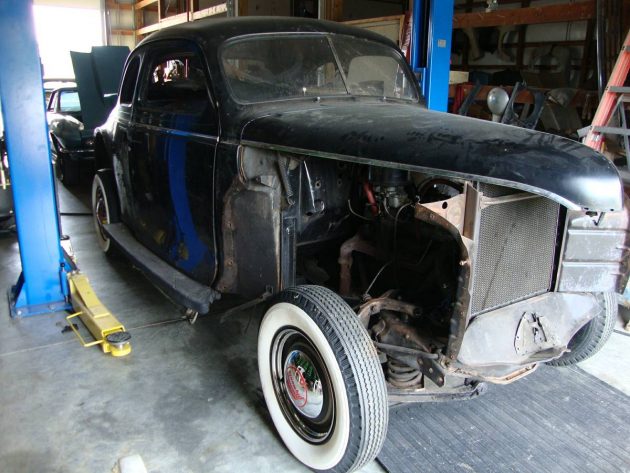
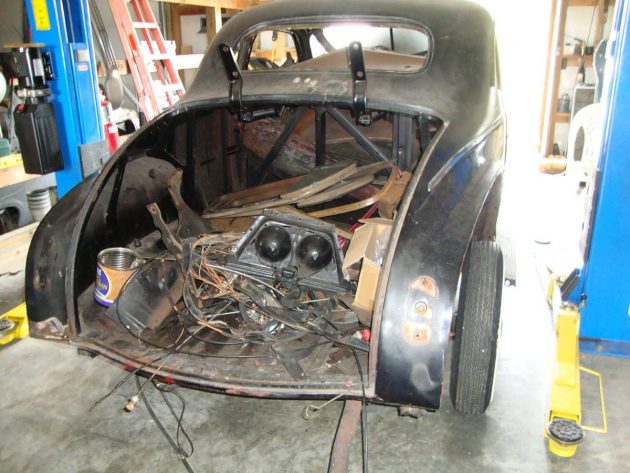
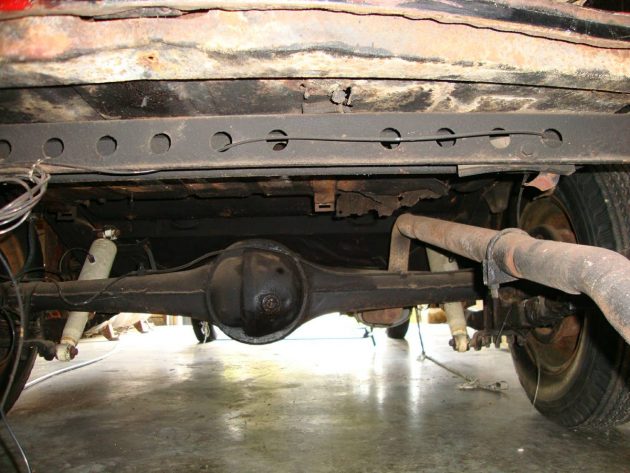
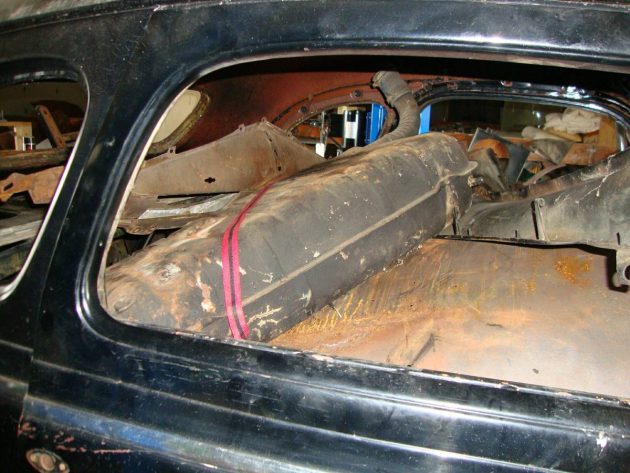
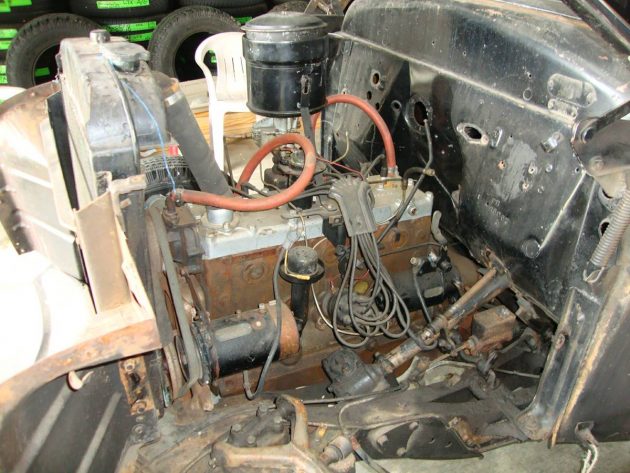
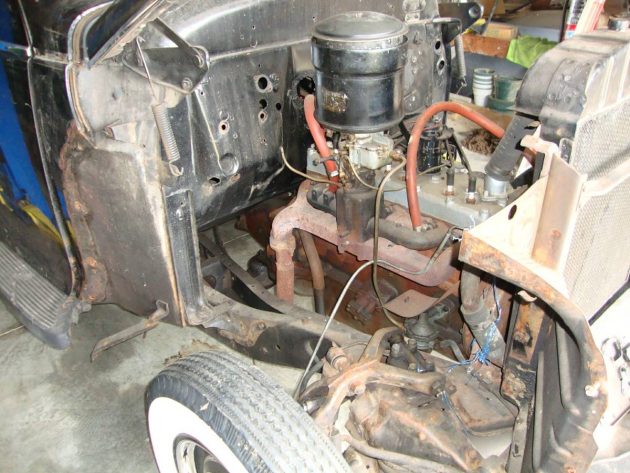

I learned a long time ago to save my coffee cans and document where every nut and bolt goes and to take a lot of pictures. Ask me how I learned this lesson…..
My grandfather and dad taught me the same thing many, many years ago. But over the years, I’ve gone one better. I use cardboard from boxes, draw a diagram of the area and place the nuts, bolts and screws through the cardboard in the areas where they need to go back to. I don’t always need them, but they come in handy when I do.
Could be a good project for the right person with the right assembly manual.
Now what really looks interesting, isn’t that a C2 sitting behind it in the first picture? Would be nice to see a little more on that one.
I have bought a couple of projects in this state. I enjoy the challenge, and I really enjoy getting projects cheap because sane people don’t want to deal with something already torn apart like this. However, in this case I think the asking price is too high for this puzzle.
It does look solid though, and pre-war cars are really pretty simple. So it might not be too hard to put it all back together.
– John
This ’47 Plymouth Coupe was bought from a gent that had bought it brand new when he was demobbed from the British army and he kept it until my friend bought it, still in untouched condition, from him in 2012. I used it for weddings and found it to be a wonderful car.
Oh the disassembly is always the most lustful part of the restoration, and thus there are a zillion such examples of every make/year/model still in existence.
Then there is the other kind, under a cover in the carport, quietly rusting, waiting for the owner who “…is going to restore it.” I found one such car last week, a Volvo 1800 sitting in a driveway under cover. The owner had no garage, but wasn’t interested in my overtures because she too was going to restore the car.
It’s a thing.
$8500? No way. You’re going to have 200+ hours into this before paint which even a mediocre paint job (with decent prep) will run you $5k at best. I love the design of this era Plymouth coupe, unfortunately, the chevy’s and Fords reign supreme and Plymouth’s don’t get their ado. The 218 engine is a rock solid runner and it’s true that parts are plentiful but way under powered when compared to the Chevrolet and Ford competitors of the day. This is a great candidate for a restomod, drop in a 383/440 with a 727 tranny and a 9” rear end and it will not only look great but be a reasonable performer light to light. All in the car will be worth $20-$30k depending on the final finish. Starting at $8500 means you will likely lose money so you better love it.
I’ve been on this same journey for 7 1/2 years now and I pulled my car apart too. I did my tear down in sections so as to not get to far out of hand. The key is to treat it like an archeological dig, carefully and part by part. I spent many hours just restoring individual parts and then storing them away. I personally believe that the reasons so many guys fail to finish is because they start with the easy fun stuff first and then get mired down in the hard stuff. I started with the hard stuff first the undercarriage and mechanical parts. Then I went on to body rust cut out and refabrication. So now my car is 80% complete and if you look at the under belly it looks like a new car. Yet to the untrained eye it looks like I’ve barely gotten started. The car we’re looking at hear looks worse than it is, if I was doing it from hear on out I’d push it into the middle of my garage and spend a couple of weeks sorting it out by laying the parts out in order on the floor around the car. I’d label everything and inventory it onto a shelving unit. Bolts out of order is not the end of rhe world as many are all the same size. With my car I’ve replaced many bolt anyway but not with new one but with better used ones. ( I’ve been a bolt hoarder for over 30 years, and I’ve got lots of them Thats what mechanics do. ) this is a beautiful car with minimal rust I would not be afraid to take it on if I were in need of a new project.
Love these Plymouths – pre and post war. You’re going to lose money on anything – if you really restore it correctly. Model T or Duesenberg – it doesn’t matter. So I agree – do it because you either love the work and/or the result. I learned a long time ago to buy something that runs and enjoy it. Ask for an interior kit for your birthday, or new wide whites for Christmas, and you’ll get there eventually – but you have to start with a decent car – that you REALLY want to restore. I would love to “save” everything I see on craigslist – but you can’t. Even a “free” car will bankrupt you if it’s too far gone to begin with.
This car appeared in the local Craigslist (Lexington) at a reduced price of 3500. I called about it and they told me that was a fake ad that someone other than them had posted and craigslist refused to take it down. However I reported it as a fake ad and Craigslist took it down within an hour. I guess it is possible for someone to go through the trouble of rewriting an ad and posting it but why?